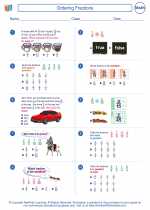Ordering Fractions -> comparing
Comparing Numbers
When comparing numbers, we want to determine the relationship between two or more numbers. We use comparison symbols to indicate these relationships. The comparison symbols are:
- < (less than)
- > (greater than)
- ≤ (less than or equal to)
- ≥ (greater than or equal to)
- = (equal to)
Comparing Whole Numbers
When comparing whole numbers, we look at the value of each digit from left to right. If the digits in the same place value are different, we can determine the relationship between the numbers based on the value of those digits.
Example:
Compare 427 and 593
Since the hundreds place has a 4 in the first number and a 5 in the second number, we know that 427 is less than 593.
Comparing Decimal Numbers
When comparing decimal numbers, we follow the same process as with whole numbers. We compare the digits from left to right, and if the digits in the same place value are different, we determine the relationship based on the value of those digits.
Example:
Compare 3.25 and 3.5
Since the tenths place has a 2 in the first number and a 5 in the second number, we know that 3.25 is less than 3.5.
Comparing Fractions
When comparing fractions, we can find a common denominator and then compare the numerators. If the denominators are the same, we can simply compare the numerators to determine the relationship between the fractions.
Example:
Compare 1/4 and 3/8
Since the denominators are different, we find a common denominator, which is 8. Then we compare the numerators: 1 * 2 = 2 and 3 * 1 = 3. So, 1/4 is less than 3/8.
Study Guide
Here are some steps to follow when comparing numbers:
- Identify the place values of the digits in each number.
- Compare the digits from left to right, starting with the largest place value.
- If the digits in the same place value are different, determine the relationship based on the value of those digits.
- For fractions, find a common denominator if necessary, and then compare the numerators to determine the relationship.
Practice comparing different types of numbers, including whole numbers, decimal numbers, and fractions, to reinforce your understanding of this concept.
Remember to use the comparison symbols (<, >, ≤, ≥, =) to express the relationships between the numbers.
Good luck with your studies!
.◂Math Worksheets and Study Guides Sixth Grade. Ordering Fractions

 Worksheet/Answer key
Worksheet/Answer key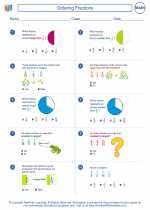
 Worksheet/Answer key
Worksheet/Answer key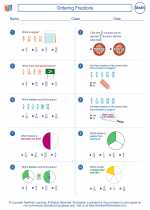
 Worksheet/Answer key
Worksheet/Answer key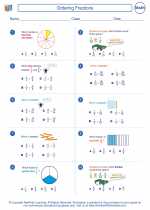
 Worksheet/Answer key
Worksheet/Answer key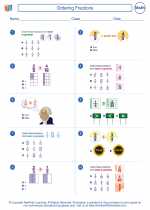
 Worksheet/Answer key
Worksheet/Answer key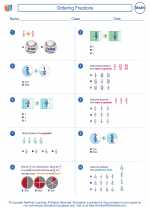
 Worksheet/Answer key
Worksheet/Answer key